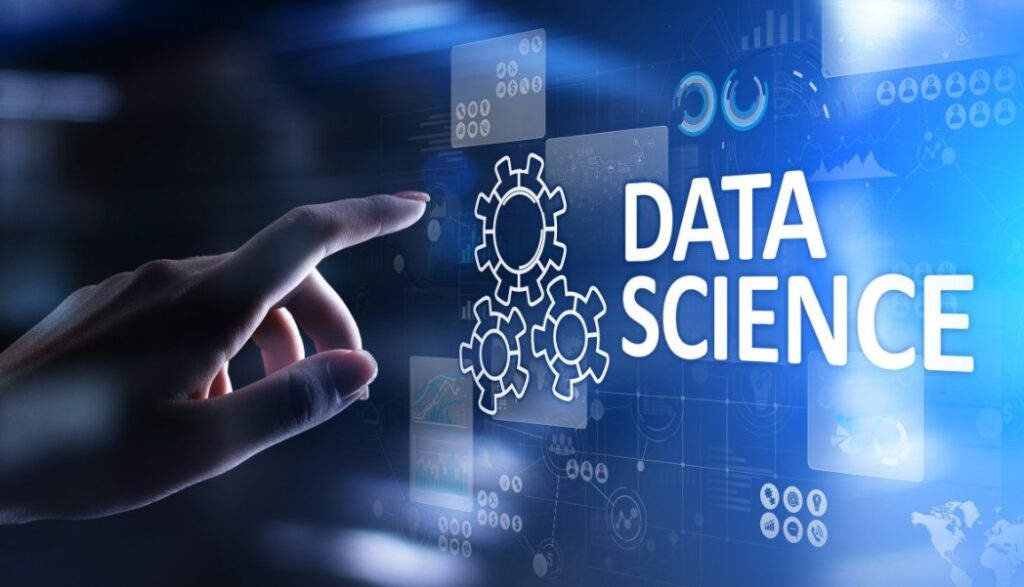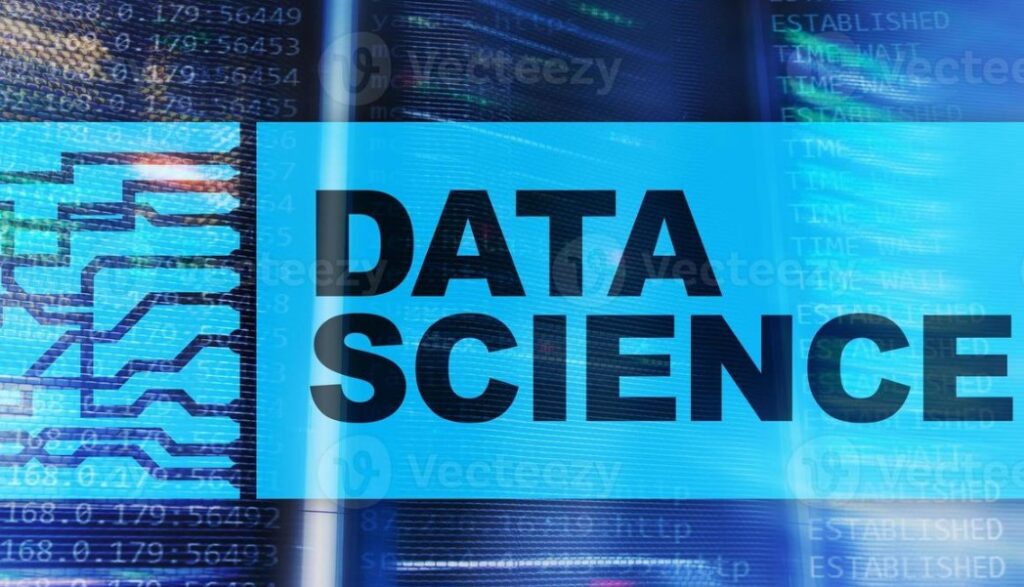Top Data Science Projects for Real-World Applications
Data science projects are pivotal in unlocking the potential of data. They encompass various tasks, from data cleaning to building predictive models that are crucial in solving complex problems. These projects blend statistics, computer science, and domain expertise to extract meaningful insights from raw data. Whether for improving business operations, enhancing customer experiences, or predicting future trends, data science projects have widespread applications in nearly every sector.
A well-executed data science project can help organizations uncover insights, make better decisions, and drive growth. For individuals, working on data science projects enhances critical thinking, improves technical skills, and can be used as a portfolio to showcase abilities to potential employers or clients. In this article, we will discuss the importance of data science projects, explore some popular real-world project examples, and offer insights on how you can start your own project.
What Are Data Science Projects?

Data science projects are organized tasks that apply analytical methods and machine learning techniques to solve real-world problems using data. These projects can vary in complexity, ranging from simple data visualizations to more intricate systems that predict future outcomes or classify information. They typically involve:
- Data Collection: Gathering relevant data from various sources, including APIs, databases, and sensors.
- Data Cleaning and Preprocessing: Ensuring the data is ready for analysis by handling missing values, formatting inconsistencies, and outliers.
- Exploratory Data Analysis (EDA): Conducting an initial investigation to uncover patterns, anomalies, and relationships within the data.
- Modeling and Machine Learning: Building statistical or machine learning models to draw predictions, classifications, or insights from the data.
- Visualization and Reporting: Presenting the results of the analysis through graphs, dashboards, or reports to facilitate understanding by stakeholders.
Common examples of data science projects include customer segmentation, market basket analysis, recommendation systems, and fraud detection. These projects help businesses leverage data to make more informed decisions, while individuals gain valuable hands-on experience in data analysis and machine learning techniques.
Key Benefits of Data Science Projects
Data science projects offer several important benefits, both for individuals and organizations. These advantages go beyond technical skill development and include improvements in decision-making, operational efficiency, and customer understanding.
Improved Analytical Skills
One of the most significant advantages of working on data science projects is the development of enhanced analytical skills. Data science involves handling large volumes of raw data, transforming it into a usable format, and applying various algorithms to gain insights. As you work through these projects, you’ll become proficient in breaking down complex data problems and solving them step-by-step. This experience helps you develop strong problem-solving capabilities, as you learn how to handle errors, optimize solutions, and present findings clearly and concisely.
By analyzing large datasets and making sense of complex information, you will also improve your critical thinking abilities, which are essential in both professional and personal decision-making processes.
Practical Experience
For individuals aspiring to build careers in data science, working on real projects is crucial. It provides practical experience that is difficult to replicate through academic coursework alone. The hands-on experience gained from data science projects can make you more competitive in the job market by showing potential employers that you have not only the theoretical knowledge but also the practical skills to apply it. Moreover, having a portfolio of well-executed projects can significantly improve your chances of landing interviews and securing job offers in data science and analytics roles.
For organizations, practical experience in deploying data science models leads to actionable insights that can drive business strategies. Employees who have worked on successful data science projects can bring their expertise to different departments, optimizing processes and improving overall company performance.
Enhanced Decision-Making
Data science projects are invaluable in improving decision-making. Businesses often face an overwhelming amount of data from various sources, and analyzing it without the aid of data science techniques can be overwhelming. However, by applying machine learning algorithms and statistical models, businesses can extract actionable insights that guide better decision-making. For example, predicting future sales trends using historical data helps companies allocate resources more effectively, reduce waste, and optimize inventory levels.
In the case of marketing, data science projects can help companies determine which products to promote to specific customer segments, improving campaign effectiveness. Ultimately, data-driven decision-making leads to better business outcomes, reducing risks and maximizing opportunities.
Versatility Across Industries
Data science is not limited to a specific industry. From healthcare to finance, retail, and technology, data science projects can be applied to a wide array of fields. In healthcare, for instance, data science projects may involve building models that predict patient outcomes or identify potential health risks. In marketing, data science might be used to analyze customer behavior and improve product recommendations.
By working on data science projects across various industries, you will not only expand your knowledge and expertise but also open up opportunities for career advancement in multiple sectors. This versatility makes data science an increasingly in-demand skill set, with professionals being sought after by businesses in virtually every industry.
Real-World Data Science Project Examples

To better understand how data science projects are implemented, let’s look at some real-world examples of successful data science applications. Each of these examples highlights the tools, techniques, and outcomes of the project, giving you a clearer picture of how to approach similar challenges.
Predicting Stock Market Trends
Project Overview: Predicting stock prices using historical data is a classic example of a data science project. The goal is to build a machine learning model that can predict whether the stock price of a particular company will go up or down based on past price data, market sentiment, and other relevant factors. Common algorithms used for this type of prediction include linear regression, decision trees, and support vector machines (SVMs).
Tools & Technologies:
- Python: Libraries like Pandas and NumPy for data manipulation, and Scikit-learn for machine learning models.
- APIs: Yahoo Finance API, Alpha Vantage for historical stock price data.
- Visualization: Matplotlib, Seaborn for data visualization.
Use Cases: Investors use predictive models to guide their trading strategies, improving their chances of buying stocks at a low price and selling them when prices are high.
Pros:
- Offers the potential for improved financial decision-making.
- Helps identify patterns and trends that may not be immediately obvious.
- Can be applied to various types of financial instruments (stocks, bonds, commodities).
Cons:
- Predictive models are not always accurate, especially in volatile markets.
- Requires significant amounts of data for training and testing models.
How to Buy & Price: While the data science tools used in this project are open-source, premium services, such as those offered by Bloomberg or other financial data providers, may come at a cost ranging from $100 to $500 per month.
Healthcare Analytics and Disease Prediction
Project Overview: Predicting diseases like diabetes or heart disease using patient data is a common healthcare analytics project. By analyzing a dataset that includes factors such as age, blood pressure, cholesterol levels, and lifestyle choices, data scientists can build models that predict the likelihood of a patient developing a certain condition.
Tools & Technologies:
- R and Python: Used for statistical analysis and model building.
- Machine Learning Algorithms: Logistic regression, decision trees, and random forests.
- Datasets: Publicly available healthcare datasets like the UCI Machine Learning Repository.
Use Cases: Medical institutions and healthcare providers can use predictive models to identify patients at high risk for conditions like heart disease, enabling early interventions and personalized treatment plans.
Pros:
- Helps doctors and healthcare professionals make more informed decisions.
- Can improve patient outcomes by detecting health risks early.
- Reduces healthcare costs by preventing expensive treatments.
Cons:
- Data privacy concerns and the need to comply with regulations like HIPAA.
- Not all medical conditions can be predicted accurately using available data.
How to Buy & Price: Many open-source tools, including R and Python, are free to use. For more advanced analytics, healthcare institutions may choose to partner with specialized platforms like IBM Watson Health, which may require a subscription or licensing fee.
E-commerce Recommendation Systems
Project Overview: E-commerce platforms like Amazon and Netflix use recommendation systems to suggest products to users based on their past behavior and preferences. These systems are built using machine learning techniques, such as collaborative filtering, content-based filtering, and hybrid models, to make personalized recommendations.
Tools & Technologies:
- Python: Libraries like Scikit-learn and TensorFlow for building recommendation models.
- Data Sources: User behavior data (clicks, purchases, ratings) is often stored in databases and analyzed.
Use Cases: Online retailers use recommendation systems to enhance user experience by suggesting products users are more likely to purchase, thereby increasing sales and conversion rates.
Pros:
- Increases user engagement and boosts sales.
- Allows businesses to offer a personalized shopping experience.
Cons:
- Requires large amounts of data to be effective.
- Can lead to privacy concerns as it involves collecting and analyzing user data.
How to Buy & Price: Building a recommendation system can be done with free open-source tools. However, larger e-commerce platforms may invest in cloud services like AWS or Google Cloud to scale their operations, with pricing models based on usage and data storage.
How to Start Data Science Projects: A Beginner’s Guide

Starting a data science project as a beginner can feel daunting, but breaking the process into clear steps will make it much more manageable. Below is a step-by-step guide to help you get started with your first data science project.
1. Choose a Relevant Project Topic
- Select a simple, focused topic: As a beginner, pick a project that aligns with your interests and is manageable in terms of data and complexity. For example, predicting product sales, analyzing customer reviews, or building a recommendation system are great options.
- Focus on a domain that interests you: You could choose topics in areas like healthcare, finance, sports, or entertainment, as working on something you are passionate about will keep you motivated.
2. Gather and Prepare Your Data
- Find reliable data sources: Look for publicly available datasets on platforms like Kaggle, UCI Machine Learning Repository, or Data.gov. Alternatively, use APIs to collect real-time data.
- Clean your data: Data cleaning is essential. Remove missing values, handle duplicates, and format the data correctly. This might include converting categorical data into numerical values and standardizing date formats.
3. Explore and Understand Your Data
- Perform Exploratory Data Analysis (EDA): Use tools like Pandas and Matplotlib to analyze and visualize the data. Look for trends, correlations, outliers, and distributions of your variables.
- Identify key patterns: Understand how different variables relate to one another. For example, if predicting sales, check how factors like seasonality or pricing affect outcomes.
4. Choose a Machine Learning Model
- Start with basic models: For a beginner, simple models such as linear regression (for continuous prediction) or logistic regression (for classification) are great starting points.
- Understand the problem: Choose the model that best suits your problem type. For regression, use algorithms like linear regression. For classification, you might start with logistic regression or decision trees.
5. Split Your Data into Training and Test Sets
- Train on one subset, test on another: Split your data into two parts: a training set (for training your model) and a test set (for evaluating its performance). A common split is 70% training data and 30% test data.
- Avoid overfitting: Make sure your model performs well on the test set, not just the training set, to avoid overfitting (when a model learns the training data too well but fails to generalize to new data).
6. Evaluate Your Model
- Use appropriate evaluation metrics: Depending on your project type, use metrics like accuracy, precision, recall, F1 score (for classification), or Mean Absolute Error (MAE) and Mean Squared Error (MSE) for regression.
- Refine your model: If the model doesn’t perform well, consider tweaking hyperparameters, trying different algorithms, or performing additional feature engineering (creating new input features from your existing data).
7. Communicate Your Results
- Create clear visualizations: Use data visualization libraries like Matplotlib, Seaborn, or Plotly to communicate your findings effectively. Graphs such as bar charts, scatter plots, or heat maps help showcase patterns and insights.
- Document your process: Use platforms like Jupyter Notebooks to document your code, visualizations, and thought process. This makes it easier to share your project with others and helps you keep track of your work.
- Highlight key insights: Ensure you present how your model’s findings are useful. For instance, if predicting sales, explain how businesses can use your model to forecast demand, optimize inventory, or adjust marketing strategies.
8. Learn and Iterate
- Continuous learning: Data science is a field where you will always learn new techniques and better ways to analyze data. As you gain more experience, you can try more complex models and techniques.
- Iterate on your project: After completing one project, reflect on what you learned, identify areas for improvement, and try another project with new challenges. This helps you refine your skills over time.
Final Thoughts
Starting a data science project as a beginner doesn’t have to be overwhelming. By following these steps:
- Choose a simple, relevant project topic.
- Gather and clean your data.
- Understand your data through exploratory analysis.
- Select and train an appropriate model.
- Evaluate and refine your model.
- Communicate your results clearly.
You’ll be on your way to gaining valuable experience in data science. Remember, the key is to start small, focus on learning, and gradually take on more complex challenges as your skills grow.
Frequently Asked Questions (FAQs)
1. What are the best tools for starting a data science project?
The best tools for starting a data science project are Python and R. Python is particularly popular due to its rich ecosystem of libraries, such as Pandas, NumPy, and Scikit-learn, which make data manipulation, analysis, and machine learning straightforward. R is also widely used for statistical analysis and data visualization. Additionally, Jupyter Notebooks is a great environment for running and sharing your code and results.
2. How much do data science projects cost?
The cost of data science projects depends on several factors, such as the complexity of the problem, the tools used, and the data required. For individual learners, using open-source tools like Python and R is free, while businesses may incur costs related to cloud computing services (e.g., AWS, Google Cloud) or premium analytics platforms (e.g., IBM Watson). Prices for these services vary widely, ranging from free access to more than $500 per month for enterprise solutions.
3. How do data science projects benefit businesses?
Data science projects help businesses by enabling data-driven decision-making. These projects uncover hidden patterns in data, allowing businesses to optimize their operations, improve customer satisfaction, and forecast future trends. Whether through predictive maintenance in manufacturing, personalized recommendations in e-commerce, or risk assessment in finance, data science provides actionable insights that can lead to cost savings and increased revenues.